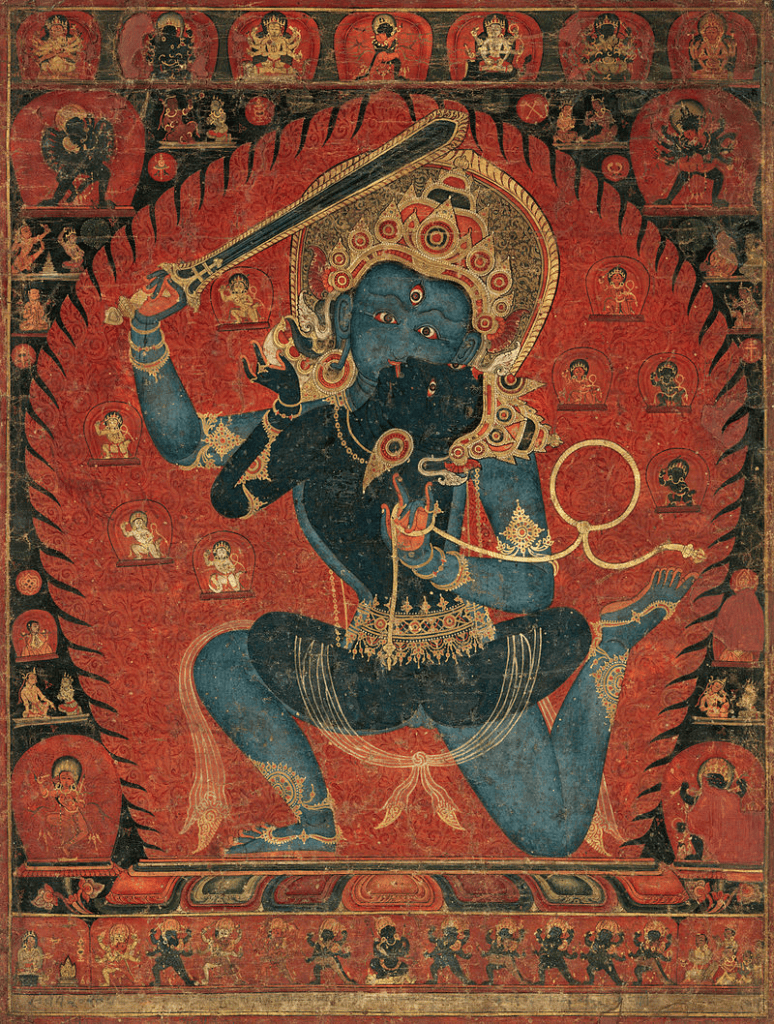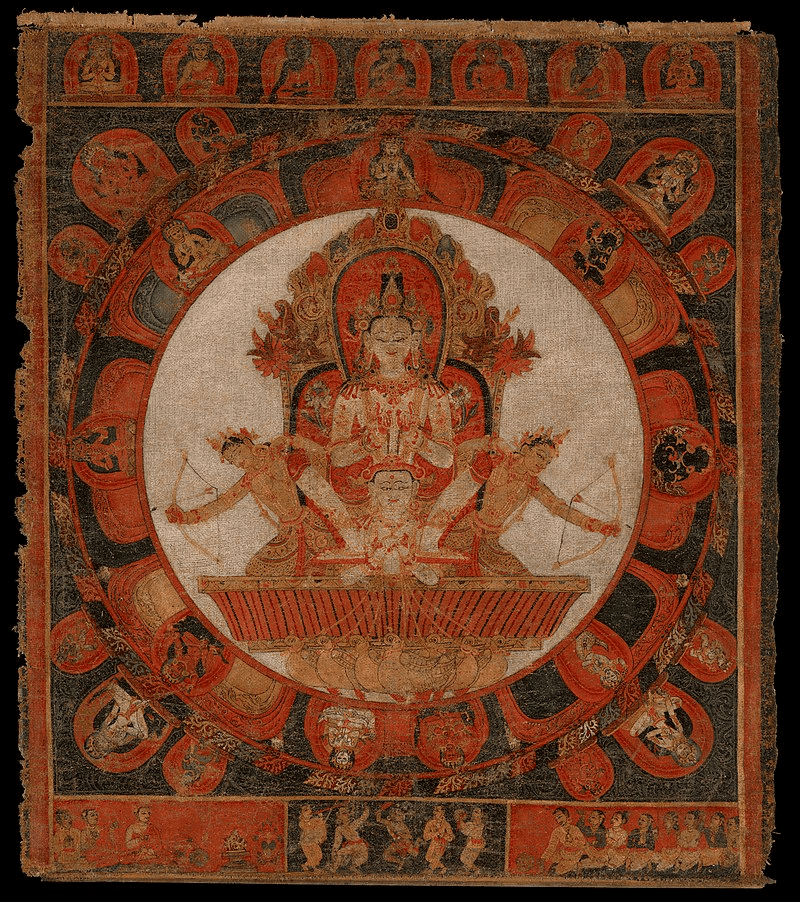Nepal is well-known for its beautiful landscapes and its delicious food. However, it is also widely known for its wall paintings, many of which were religious paintings featuring Buddhist or Hindu subjects. In the 19th century, Nepalese paintings became influenced by the West, and marked the beginning of a modern trend in the country.
However, although Nepalese paintings have evolved with time, the older paintings have rich and interesting histories surrounding them. In this article, we’re going to look more closely at some of the oldest wall paintings in Nepal. Let’s dive in!
4. Painting of Bhupatindra Malla
Time period of being painted: 18th Century
Artist: Unknown
Current location: Rijksmuseum Museum

Much like some of the other paintings on this list, there unfortunately isn’t a lot of information on the painting of Bhupatindra Malla. However, we do know that this portrait was painted on cloth, and not a canvas. It depicts the monarch, Bhupatindra, who belonged to the Malla dynasty.
At the time, monarchs from this particular dynasty believed that they were reincarnations of Hindu gods, particularly the god Vishnu. As a result, this particular portrait shows Bhupatindra on a throne made of snakes, with their heads pointing towards the sky.
Did you know?
Bhupatindra Malla ruled Bhaktapur and was a patron of the arts. He loved the arts so much that his reign is widely considered to be one of the highest points of Bhaktapur’s cultural history.
3. Acala with Consort Vishvavajri
Time period of being painted: 16th Century
Artist: Unknown
Current location: The Metropolitan Museum of Art

The painting titled ‘Acala with Consort Vishvavajri’ is another Nepali painting whose artist is unknown. When translated literally, the word ‘Acala’ means immovable. However, in this painting’s case, Acala is a manifestation of a bodhisattva named Manjushri.
Manjushri was known for protecting people against ill health, and was generally associated with the practice of healing and magic. This painting brings the Chandamaharoshana Tantra, a written text dedicated to Acala, to life, in visual form.
Did you know?
The painting Acala with Consort Vishvavajri includes an image of a noose. The noose signifies that Acala will catch those that are ignorant.
2. Mandala of Chandra
Time period of being painted: Early 15th Century
Artist: Unknown
Current location: Metropolitan Museum of Art

The Mandala of Chandra is one of the oldest examples of a wall painting in Nepal. Unfortunately, since it is from the early 15 century, there isn’t any information that we were able to find about the origins of this painting or who its primary artist was. However, we do know that this painting is painted on a piece of cloth.
It shows the white moon god, Chandra. In this painting, he holds two white lotuses, and a charioteer sits right in front of him. One of the most interesting things about this painting is that it was painted on cloth. It has sixteen deities in it, which most likely represent the moon’s phases.
Did you know?
The Mandala of Chandra painting is currently being displayed at the Metropolitan Museum of Art, and was gifted by Mr. and Mrs. Uzi Zucker in 1981.
1. Mandala of the Sun God Surya
Time period of being painted: 14th Century
Artist: Kitaharasa
Current location: The Metropolitan Museum of Art

Although this painting was completed during the 1300s, we know that it was painted by the artist Kitaharasa on cloth, using distemper paint. It was painted during the early Malla period and depicts Surya, the sun god.
In this painting, Surya is depicted riding his chariot, with a charioteer controlling the seven horses that guide it. There are also two goddesses, one on either side of the charioteer, who are shooting arrows. Research shows that those arrows symbolize the driving away of darkness.
Did you know?
This painting is inscribed with its donor’s name, Bhisnudevesvara. This inscription is symbolic because it indicates that the donor performed a ceremony to get risk of negative karma.
Conclusion
In this article, we walked you through a list of four of the oldest wall paintings in Nepal. As you can probably tell from how short this list is, there are a ton of other Nepalese wall paintings out there. However, since many of them are so old, there is little to no information about them! Still, we hope you learned something new from this article.











